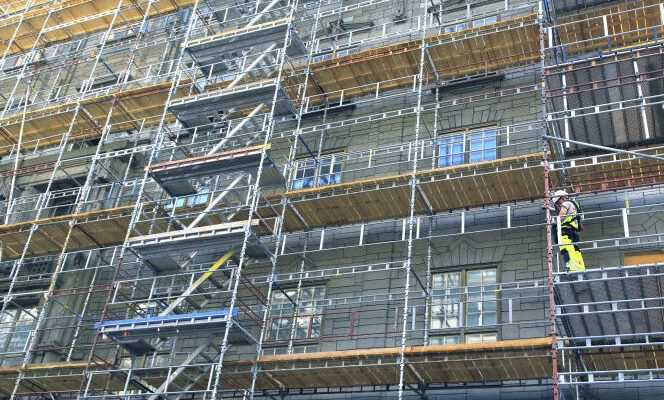Good news on the employment front: despite the Covid-19, job creations recorded a stronger than expected rebound in the private sector in the first quarter, increasing by 0.5%, or 88,800 net creations , according to the final estimate published Thursday, June 10 by the National Institute of Statistics and Economic Studies (Insee).
INSEE has revised upwards its provisional estimate of May 7, which reported 57,300 net job creations in the private sector (+ 0.3%) between the end of December 2020 and the end of March 2021. In provisional estimate, “We saw that private employment was increasing in the first quarter and it was a surprise, because we had expected that it would decrease. And there, we confirm this increase and it is even revised upwards “commented Sylvain Larrieu, head of the labor market synthesis and conjuncture division at INSEE. In a note on the economic situation in March, the institute had in fact forecast a slight drop in salaried employment in the first quarter.
With public employment, which did not appear in the publication at the beginning of May and has almost stabilized (- 2,700 jobs), salaried employment increased overall in the first quarter by 0.3% (+ 86,100 jobs), after – 0.1% (- 22,800) in the previous quarter. But in total, employment still remains “Well below its level at the end of 2019”, before the Covid-19 crisis, recalls Mr. Larrieu.
At the end of the first quarter, private salaried employment was 1.2% below its level at the end of 2019 (i.e. – 243,400 jobs), while public employment exceeded its pre-crisis level of 0, 6% (+ 33,600). In total, salaried employment is at the beginning of 2021 at a level comparable to that of the beginning of 2019, explains INSEE.
Construction and health exceed their pre-crisis level
At 1er quarter of 2021 and after strong fluctuations in 2020, temporary work, the compass for the job market, has almost stabilized (+ 0.3%, or + 2,400 jobs). But temporary employment was 5% below its level at the end of 2019 in March 2021 (- 39,600 jobs).
Excluding temporary work, employment is almost stable in industry (+ 0.1% at 1er quarter, ie + 1,900 jobs), but again remains below its pre-crisis level (- 1.8%, ie – 55,600 jobs). In the commercial services sector, excluding temporary work, salaried employment increased moderately (+ 0.4%, or + 47,900). It remains well below its level at the end of 2019 (- 2%, or – 239,600).
On the other hand, it increased markedly in construction (+ 1.4%, or +19,800), far exceeding its pre-crisis level (+ 3.5% compared to the end of 2019, or +50,800). Finally, employment in the non-market tertiary sector increased by 0.2% (+17,700). Here too, it exceeds its pre-crisis level (+ 1% compared to the end of 2019, or + 76,500), mainly in the health sector (+ 3.5%, or + 55,900 jobs).
The breakdown by sector is “Relatively logical” in view of the effects of the crisis, observes Mr Larrieu. Two of them have an employment level “Significantly higher than before the crisis” : construction and health, with each of these sectors “Around 50,000 more jobs compared to before the crisis”, with health progressing in both the public and private sectors, he notes. “The most significant losses are unsurprisingly in accommodation, catering and arts, entertainment, culture”, very affected by the Covid-19, around ” – 10% compared to their pre-crisis level ”, continues the expert.
With less than a year before the presidential election, the future remains uncertain on the employment front, while the government intends to gradually exit from “Whatever the cost”. INSEE provides forecasts at the beginning of July on the evolution of employment by the end of the year, which will make it possible to see “The way back to normal”.
